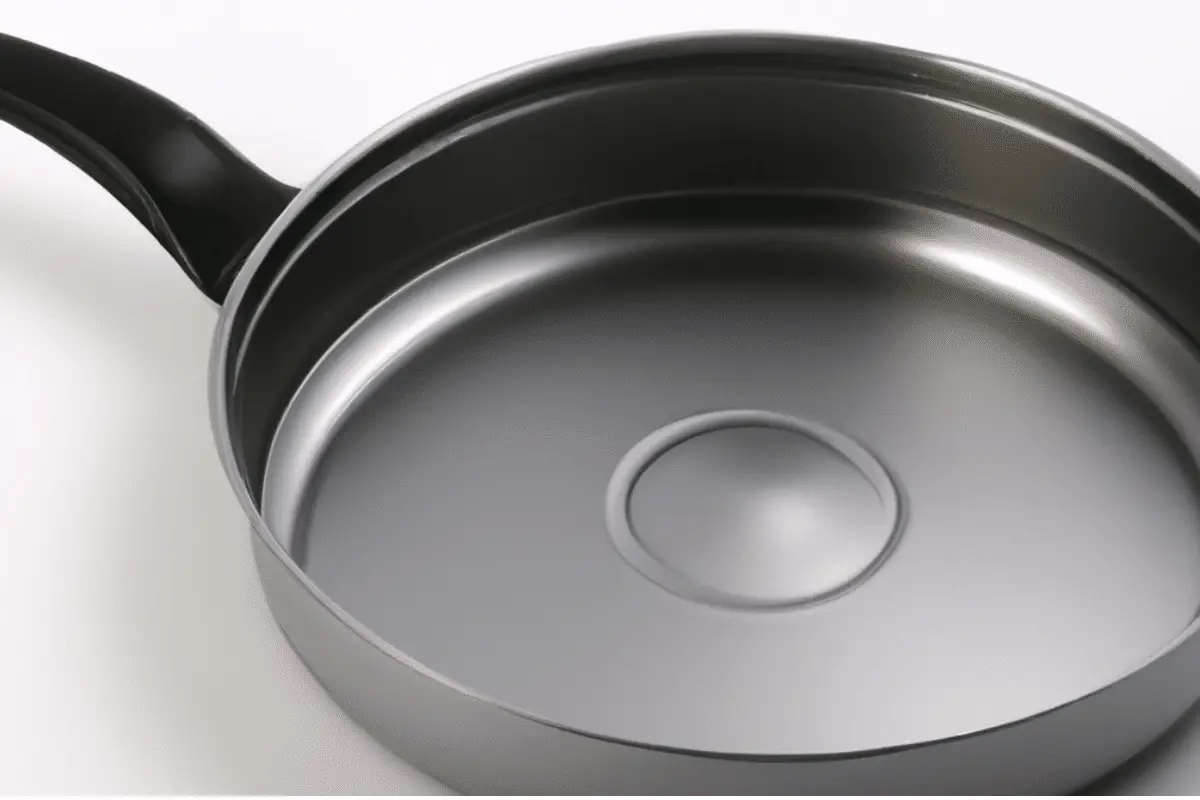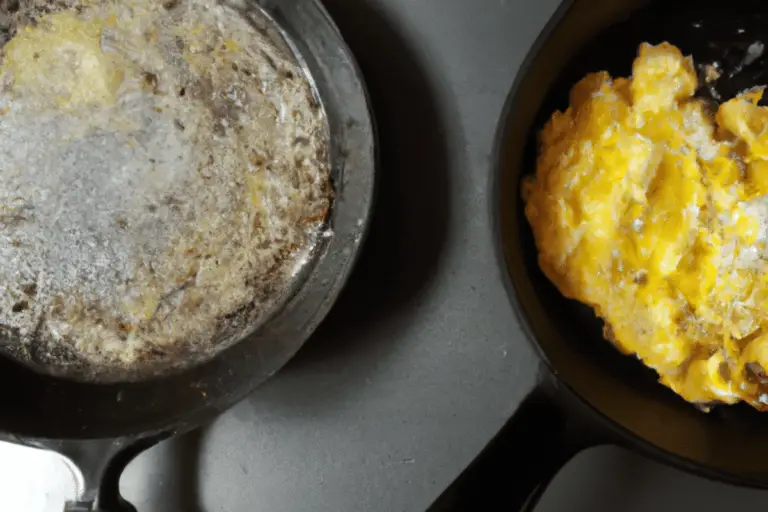Cooking is an art that requires the right tools to achieve the perfect dish. One of the most important tools in any kitchen is a good pan. But with so many options available, it can be hard to decide which one to choose. If you’re torn between a rondeau pan and a saute pan, you’re not alone.
Many home cooks and professional chefs struggle with this decision. In this article, we’ll take a closer look at the similarities and differences between these two types of pans and help you decide which one is best for your needs.
We’ll explore the design, materials, heating performance, versatility, maintenance, and value of each type of pan. By the end of this article, you’ll have a clear understanding of the pros and cons of each pan and be able to make an informed decision.
Rondeau vs Saute Pan: What’s the difference?
When it comes to choosing the right pan for your cooking needs, it can be difficult to decide between a rondeau pan and a saute pan. Both types of pans have their own unique features and benefits, but they are also quite different.
In this section, we’ll take a closer look at the similarities and differences between these two types of pans. We’ll discuss the design, materials, and heating performance of each pan, as well as their versatility and maintenance requirements.
By the end of this section, you’ll have a clear understanding of the pros and cons of each pan and be able to decide which one is best for your needs.
Design and Shape
When it comes to the design and shape of rondeau pans and saute pans, there are some key differences to consider. The rondeau pan is a traditional French pan that is known for its deep, straight sides and wide, flat bottom. This design is ideal for braising, stewing, and simmering, as it allows for ample room to brown and sauté ingredients while also providing enough space to hold a large amount of liquid. The wide, flat bottom also allows for easy stirring and scraping, making it a great pan for dishes that require frequent stirring.
On the other hand, saute pans have sloping sides that are designed for sautéing and pan-frying. The sloping sides make it easy to toss and flip ingredients without spilling, and the smaller surface area makes it ideal for dishes that require high heat and fast cooking. The lid is also an important feature in saute pans, which is great for steaming, braising or reducing liquids.
In summary, while the rondeau pan is best suited for braising, stewing, and simmering, the saute pan is best for sautéing and pan-frying. The design and shape of each pan are tailored to specific cooking techniques, and it’s important to consider what you’ll be using the pan for before making a decision.
Material Comparison
The materials used in rondeau pans and saute pans can greatly impact the performance and durability of the pan. Rondeau pans are traditionally made from heavy-duty materials such as cast iron or stainless steel, which provide excellent heat distribution and retention. Cast iron rondeau pans are particularly well-suited for slow cooking and braising, as they can be used on the stovetop or in the oven. Stainless steel rondeau pans are also a popular choice as they are more lightweight and easy to clean, however they may not have the same heat retention as cast iron.
On the other hand, saute pans are often made from a combination of materials such as aluminum or copper for heat conduction, and stainless steel or non-stick coating for easy cleaning and durability. Aluminum and copper saute pans heat up quickly and evenly, making them ideal for high-heat cooking techniques like sautéing and pan-frying. Stainless steel saute pans are also a great option as they are durable and easy to clean, but they may not conduct heat as well as aluminum or copper.
In summary, both rondeau pans and saute pans can be made from a variety of materials, each with their own unique benefits. Cast iron and stainless steel rondeau pans are great for slow cooking and braising, while aluminum and copper saute pans are best for high-heat cooking techniques like sautéing and pan-frying. Consider the type of cooking you’ll be doing and the durability you need when choosing the right material for your pan.
Heating Performance
When it comes to heating performance, rondeau pans and saute pans have their own strengths and weaknesses. Rondeau pans, due to their heavy-duty materials such as cast iron or stainless steel, provide excellent heat distribution and retention. This means that the heat is evenly distributed across the entire pan, which is important for dishes that require slow cooking and braising. The heat retention also allows for a consistent temperature throughout the cooking process, which is ideal for dishes that require long simmering times.
Saute pans, on the other hand, have sloping sides that are designed for high-heat cooking techniques such as sautéing and pan-frying. The sloping sides also allow for easy tossing and flipping of ingredients without spilling. The aluminum or copper materials used in saute pans are great conductors of heat which means that they heat up quickly and evenly, making them ideal for dishes that require high heat and fast cooking.
In summary, when it comes to heating performance, rondeau pans are best for slow cooking and braising, while saute pans are best for high-heat cooking techniques like sautéing and pan-frying. The construction and materials of each pan are tailored to specific cooking techniques, and it’s important to consider what you’ll be using the pan for before making a decision.
Versatility and Uses
When it comes to versatility and uses, both rondeau pans and saute pans have their own unique features that make them suitable for different types of cooking. Rondeau pans are known for their deep, straight sides and wide, flat bottom, which makes them ideal for braising, stewing, and simmering. They are great for dishes like stews, soups, and braised meats, as the ample room allows for browning and sautéing ingredients while also providing enough space to hold a large amount of liquid. The wide, flat bottom also allows for easy stirring and scraping, making it a great pan for dishes that require frequent stirring.
On the other hand, saute pans are known for their sloping sides that are designed for sautéing and pan-frying. The sloping sides make it easy to toss and flip ingredients without spilling, and the smaller surface area makes it ideal for dishes that require high heat and fast cooking. Saute pans are also great for making pan sauces, searing meats, sautéing vegetables, and even making scrambled eggs or omelets.
In summary, Rondeau pans are great for dishes that require slow cooking and braising, while saute pans are ideal for high-heat cooking techniques like sautéing and pan-frying. Each pan has its own unique features that make it suitable for different types of cooking, and it’s important to consider what you’ll be using the pan for before making a decision.
Maintenance and Durability
When it comes to maintenance and durability, both rondeau pans and saute pans have their own unique considerations. Rondeau pans, made from heavy-duty materials such as cast iron or stainless steel, can be quite durable and long-lasting. However, they do require some extra care and maintenance, such as seasoning and proper cleaning to prevent rusting and sticking. They are also heavier than saute pans which makes it harder to handle.
Saute pans, on the other hand, are often made from a combination of materials such as aluminum or copper for heat conduction, and stainless steel or non-stick coating for easy cleaning and durability. These pans are generally easier to clean and maintain, but they are not as durable as rondeau pans. Aluminum and copper saute pans are not suitable for acidic foods and acidic liquids, as they may react with the food and affect its taste. Non-stick coating can also wear off over time and may require replacement.
In summary, while rondeau pans are durable but require extra care and maintenance, saute pans are easy to clean and maintain but are not as durable as rondeau pans. Consider how often you will be using the pan, and how much time and effort you’re willing to put into maintaining it before making a decision.
Price and Value
When it comes to price and value, both rondeau pans and saute pans can vary widely depending on the materials and brand. Generally speaking, rondeau pans tend to be more expensive than saute pans. This is because they are made from heavy-duty materials such as cast iron or stainless steel, which are more expensive to produce. High-end brands and those with thicker gauge metal will also be more expensive.
Saute pans, on the other hand, can vary widely in price depending on the materials and brand. Aluminum and copper saute pans are generally less expensive than rondeau pans, but they may not be as durable. Stainless steel saute pans are a more expensive option, but they are durable and easy to clean.
In summary, while rondeau pans tend to be more expensive than saute pans, both types of pans can vary widely in price and value depending on the materials and brand. Consider your budget and how much you’re willing to spend before making a decision. It’s also important to keep in mind that a more expensive pan may be a better investment in the long run if it is more durable and requires less maintenance.
Final Verdict: Which one to choose?
When it comes to deciding between a rondeau pan and a saute pan, it’s important to consider the type of cooking you’ll be doing, your personal preferences, and your budget.
Rondeau pans are best for slow cooking and braising, thanks to their deep, straight sides and wide, flat bottom that allows for ample room to brown and sauté ingredients while also providing enough space to hold a large amount of liquid. They are also great for dishes that require frequent stirring and scraping. However, they are heavy and require extra care and maintenance, such as seasoning and proper cleaning to prevent rusting and sticking.
Saute pans are best for high-heat cooking techniques like sautéing and pan-frying. The sloping sides make it easy to toss and flip ingredients without spilling, and the smaller surface area makes it ideal for dishes that require high heat and fast cooking. They are also great for making pan sauces, searing meats, sautéing vegetables, and even making scrambled eggs or omelets. Saute pans are generally easy to clean and maintain, but they are not as durable as rondeau pans.
In conclusion, both rondeau pans and saute pans have their own unique features and benefits that make them suitable for different types of cooking. Consider your cooking needs, personal preferences, and budget before making a decision. Each pan has its own unique features that make it suitable for different types of cooking, and it’s important to choose the one that best fits your needs.





